How do you see time?
Take a second and think about it. How do you picture this year or next month in your mind? How would you describe it or draw it?
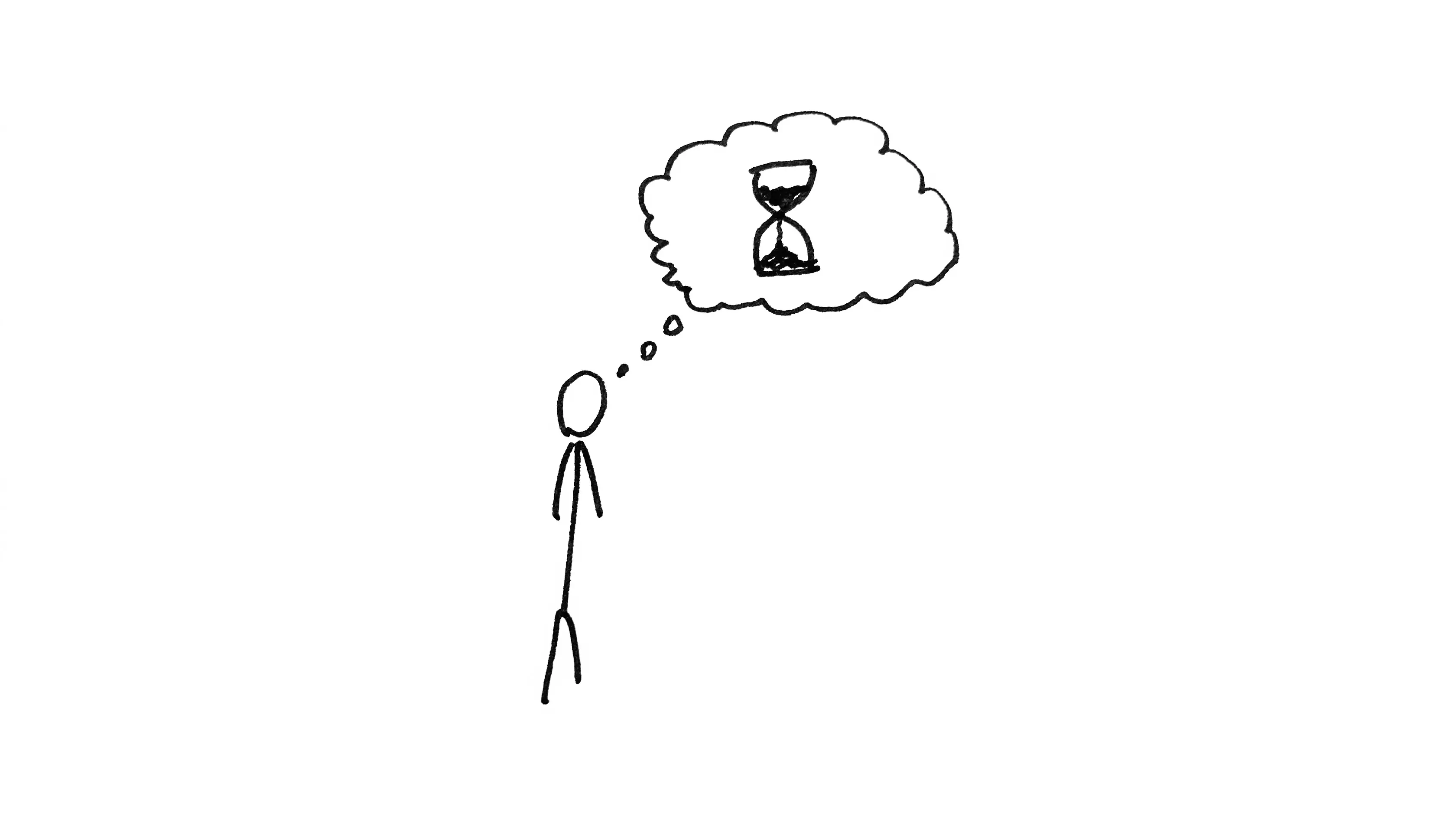
Shared time
I am sure you thought of something. But don’t worry if you didn’t. Even though all of us are working with dates, not everyone needs to visualize them.
If you did think of something, it would actually be really hard for me to guess what you had in mind. As it turns out, the answer to this question varies a lot between people. The mental projection of time and calendar is a very personal and sometimes unique image.
A calendar is a culturally shared abstraction for time. There are many ways to formally define what a calendar is, and there are a number of calendar systems actively used around the world. Among them, the Gregorian calendar is the lingua franca. Even though others, like the Hebrew calendar or Islamic calendar, differ in detail, they follow the same basic structure. Namely, calendar days are grouped into months and months into years.
Perhaps the easiest way to draw this structure would be a continuous line with markings. A timeline, so to speak. Such a timeline is what some people actually imagine when they think about a calendar.
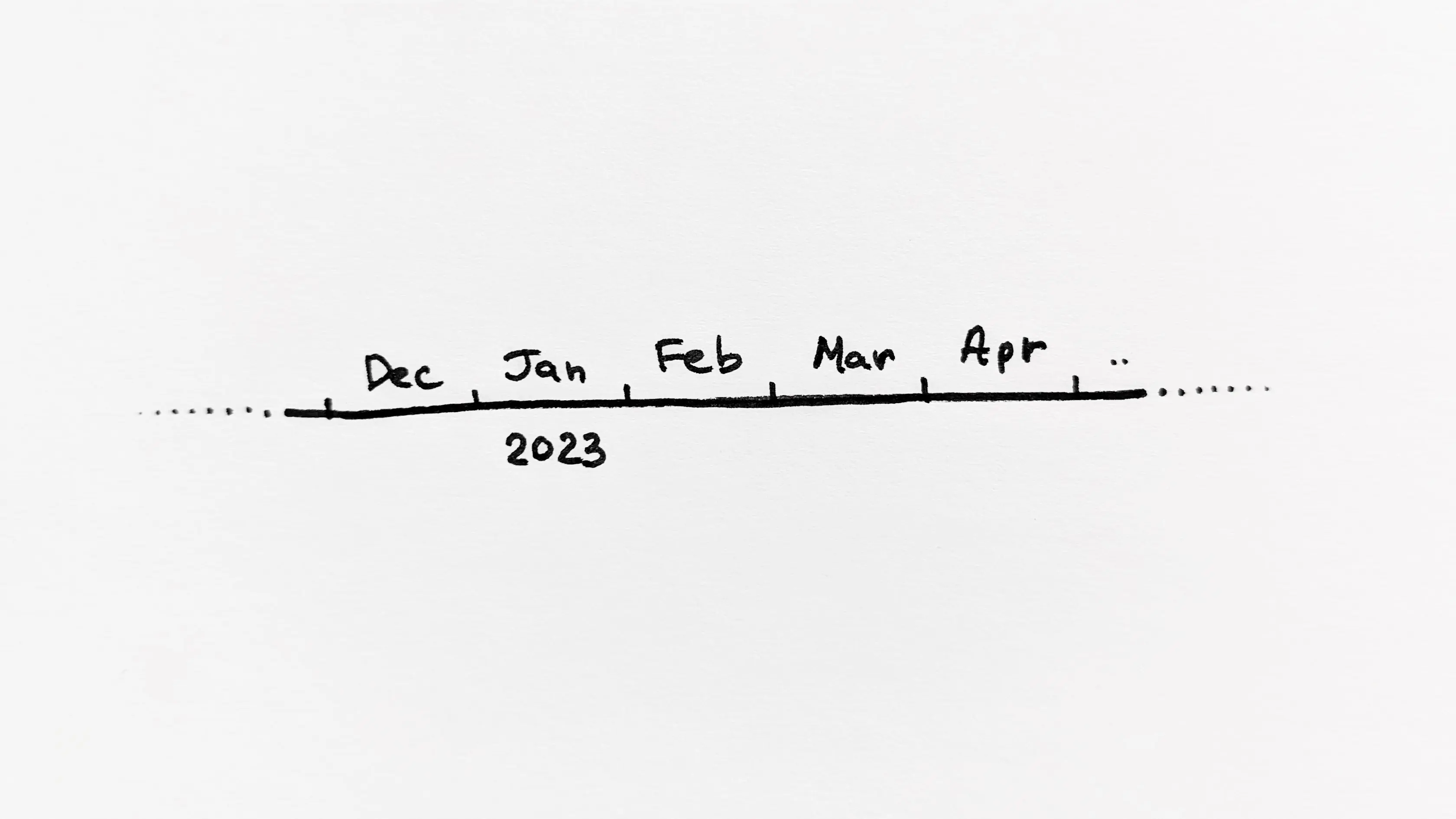
But the easiest to draw, does not mean the easiest to work with in your head. In fact, what you imagine may be so natural to you, that you don’t even realize you have been doing it for years (pun intended).
It’s my time
I myself had no clue! Only recently, it dawned on me that I have a specific way I see a calendar in my mind. For me, time is indeed a flat circle1.
It is a circle with 12 months. January at the top, and the rest of the months going clockwise. It’s a static image that is always the same regardless of what time of year it is. Very much like the face of a wall clock.
 I see a year as a circle
I see a year as a circle
If I need to “see” a specific month, it’s like zooming the image. The curvature of the “timeline” is preserved. For instance, April is always kind of vertical and the days in it go top to bottom. While July is always horizontal and the days go from right to left. Month labels do not really exist in my mental image, because I don’t need to “read” them. I always intuitively know which month I am looking at.
The chances are that all of this sounds either very familiar to you or very bizarre. I didn’t know before long there was any image in my head at all, I just used it. Since I identified it, though, I became very eager to learn what other people think.
I asked my partner to describe how they visualize the calendar.
It seems to be a circle…
Nice! Does it mean everybody imagines it like a circle?
My birthday is at the top…
Hm, okay. I am trying mentally to rotate my circle to see how it feels — it is uncomfortable!
And the months have very different lengths…
Now I need some time to process that! They clearly have to be the same size or very close.
Also, some of them have colors.
Colors?? Whoa!
What a boring calendar I have in my head.
Calendar synesthesia
It turns out that the variety of mental calendars stretches far beyond circles of all shares and sizes. There is even a semi-scientific term for picturing calendars — Calendar Synesthesia. The “calendar” part is clear, but “synesthesia” is something I learned only recently about. It was discussed in the context of calendars on my favorite scientific podcast, The Skeptics Guide to the Universe - Episode 912.
Synesthesia, put simply, is a sensory or “mental” reflex. When you feel/imagine one thing, you involuntarily feel/imagine another (usually unrelated) thing. For people with synesthesia, numbers could always appear colored, or sounds could have specific taste. Some people find it helpful, some say it makes their life harder, and others don’t even know they have it. There are communities of people online such as r/Synesthesia subreddit where people share their experiences with this. In this context, calendar synesthesia is when thinking about calendar dates prompts a specific visual image.
When learning about all of this, I talked to my friends and perused the internet to find out what other people actually visualize. The variety ended up being so great that it warrants some classification. It is by no means exhaustive, but should give you a good impression of innate human imagination abilities.
- Dimensions
- 2D
- 3D
- Continuity
- Discrete — a finite image, usually of one year
- Continuous — a close up on a part of an infinite view
- Shape
- Line or stripe (usually continuous)
- Circle or rectangle
- Group of shapes (with a shape per month)
- Time direction
- Clockwise / anti-clockwise
- Left-to-right / right-to-left
- Forward / backward (from observer)
- Color
- Colorless (either black-and-white or of indeterminate color)
- Colored words or shapes
- The background is a static image from memories
- Observer position
- In front of the observer (as if on a screen or paper)
- Around the observer (as if standing inside a hula-hoop)
- Observer freedoms
- Fixed — the image is always exactly the same
- Zoom — zooming in and out
- 3D orientation — changing direction of sight and moving around
If you ask me, that looks a lot like trying to categorize all computer games. This truly speaks to the power of our imagination.
Year’s gallery
I doodled around and produced a number of sketches based on what people published or described online.
The sketches only show basic shapes and structures that people imagine. The “real” images would include colored, rotated, reversed and re-formed variations.
 Calendar as infinite timeline
Calendar as infinite timeline
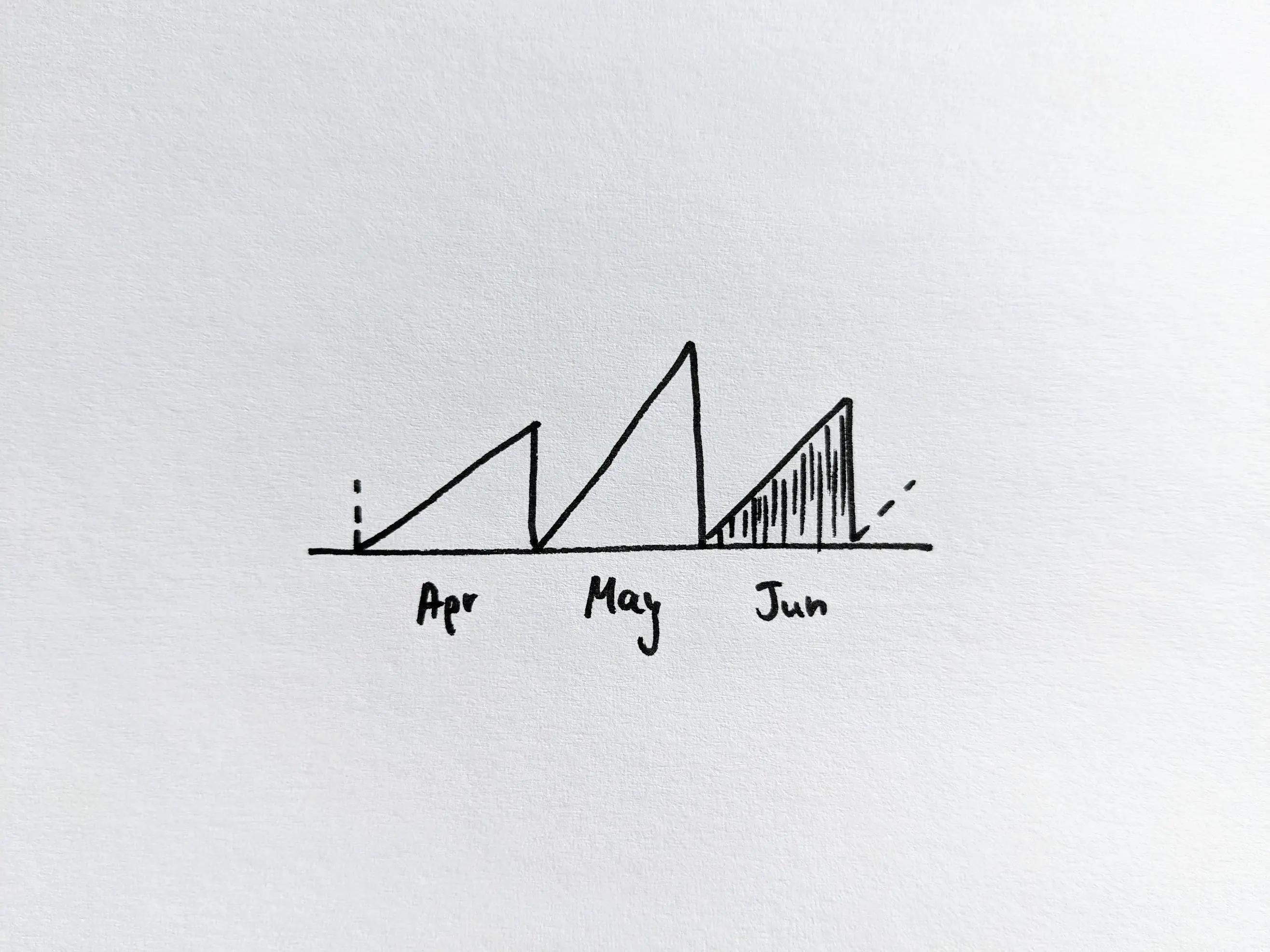 Months triangles on the timeline
Months triangles on the timeline
 Calendar year as a circle
Calendar year as a circle
 Year as a circular stripe
Year as a circular stripe
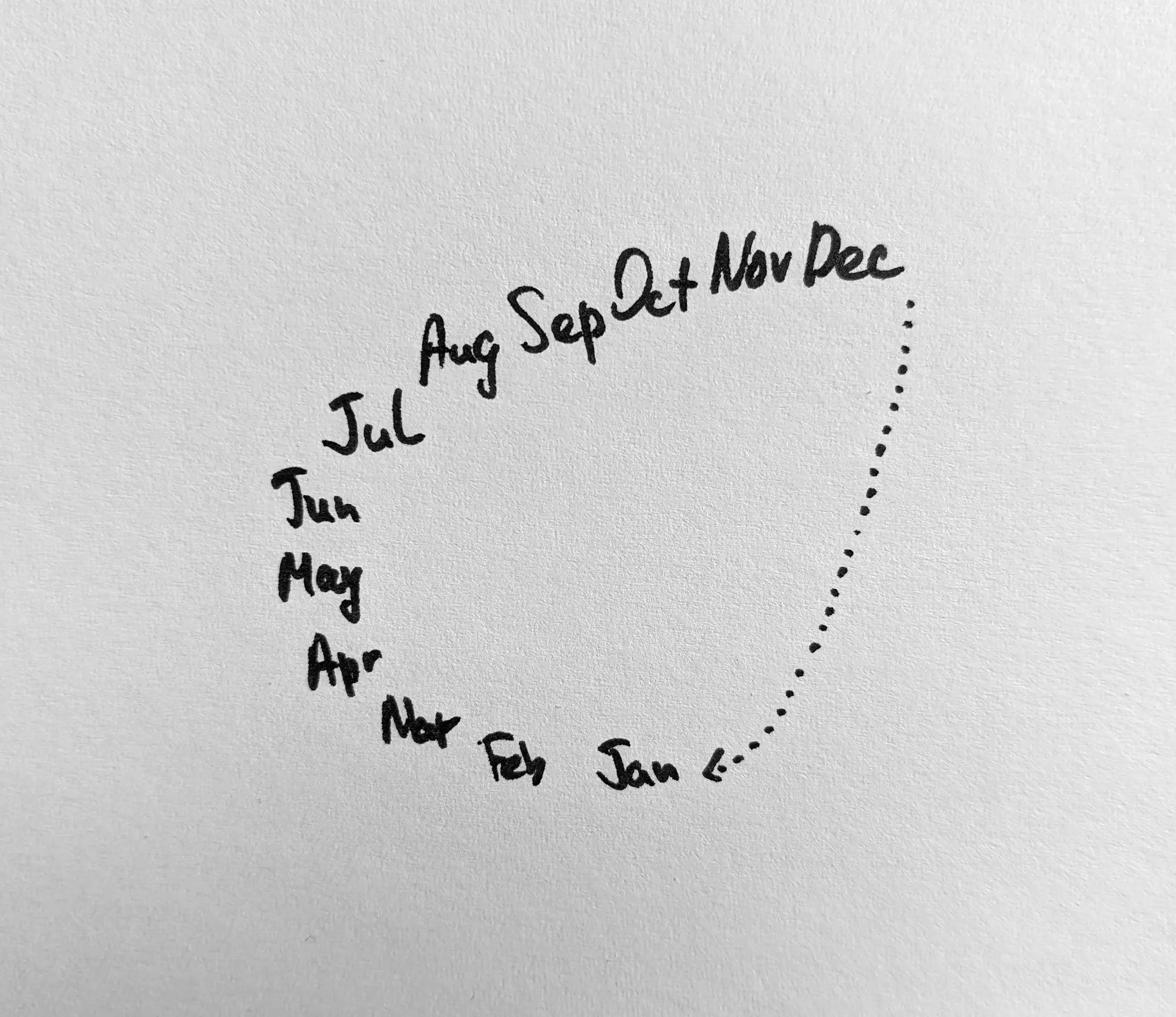 Year as a C-like curve
Year as a C-like curve
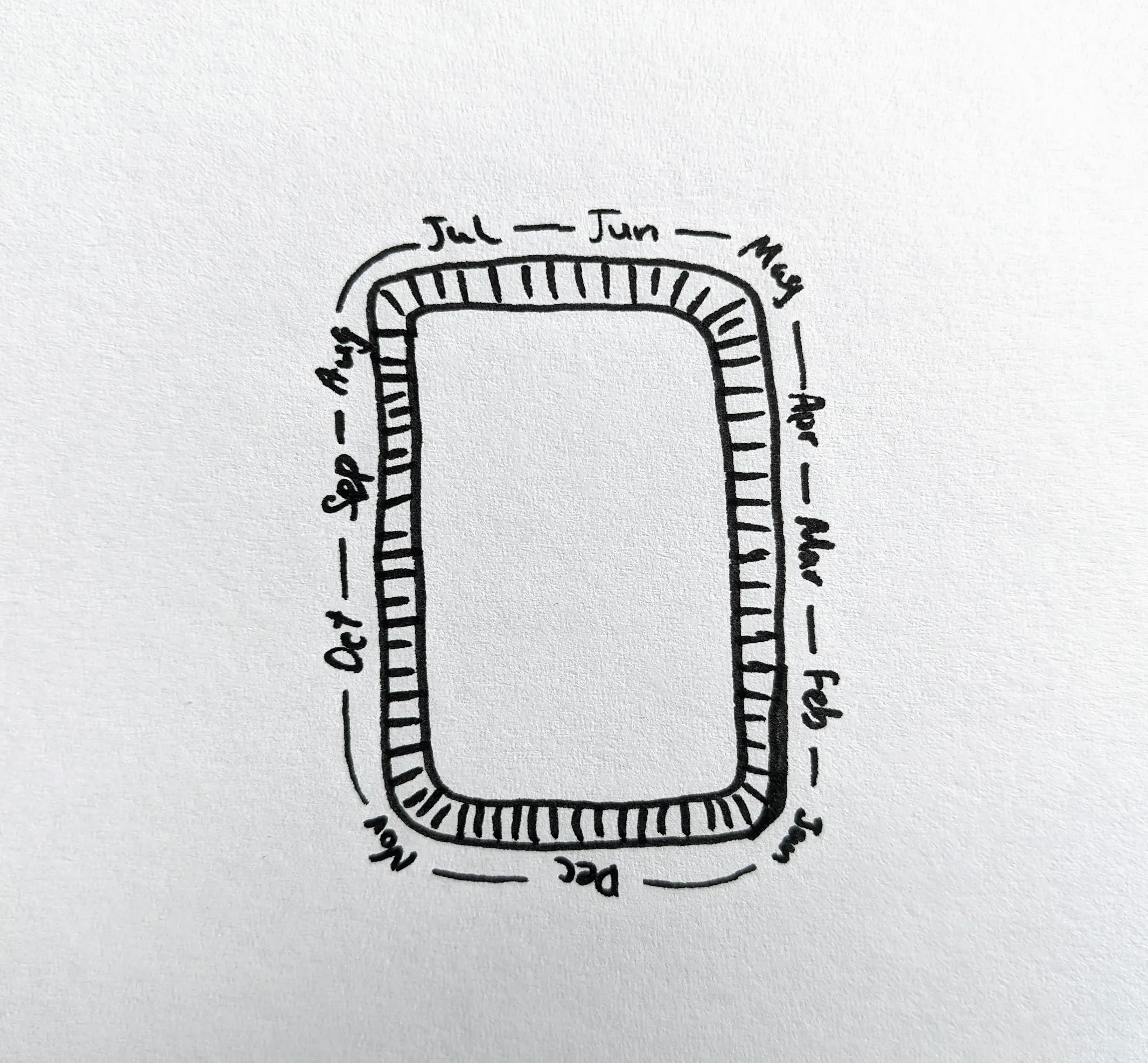 Year as a rectangle
Year as a rectangle
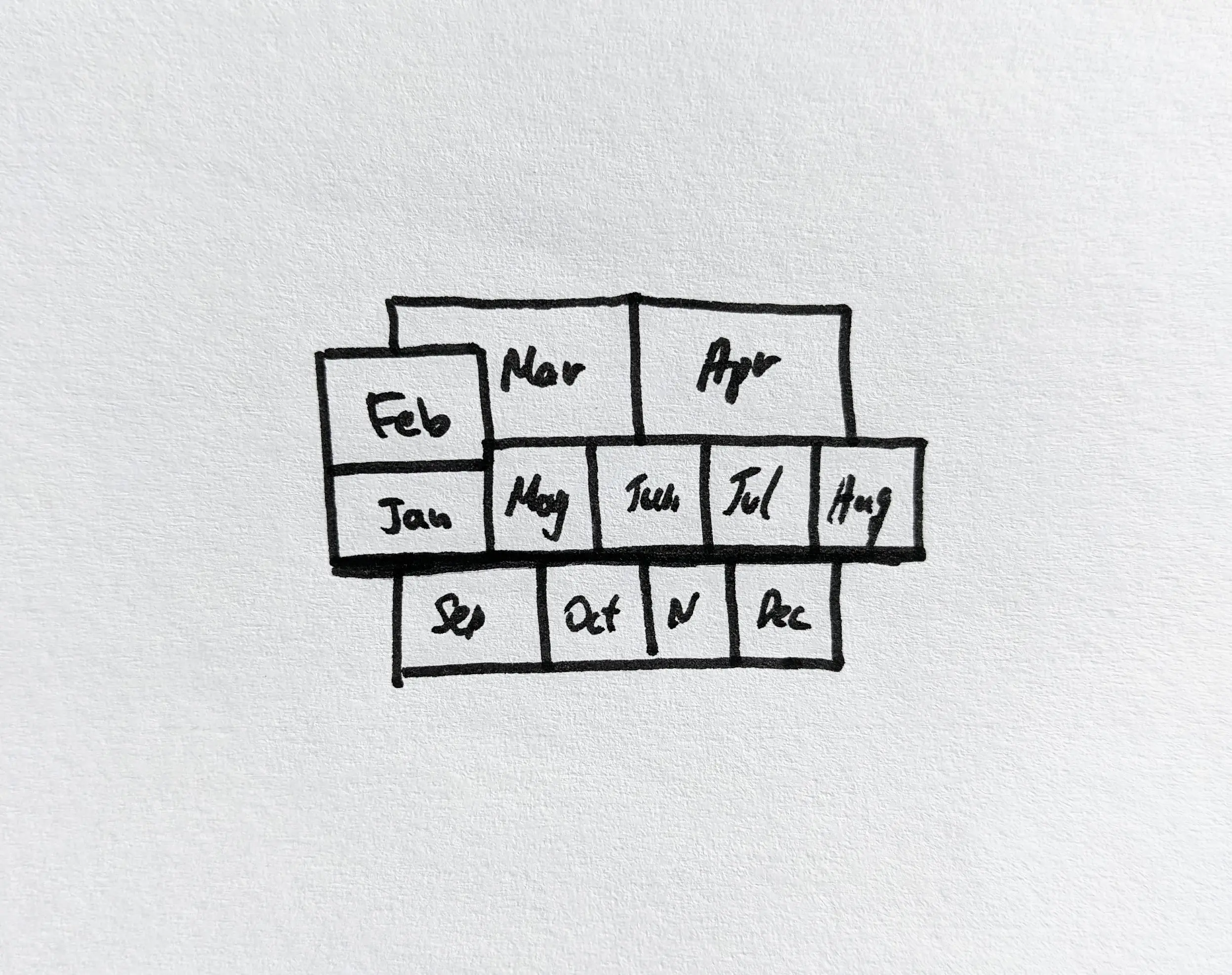 Year as a group of month shapes
Year as a group of month shapes
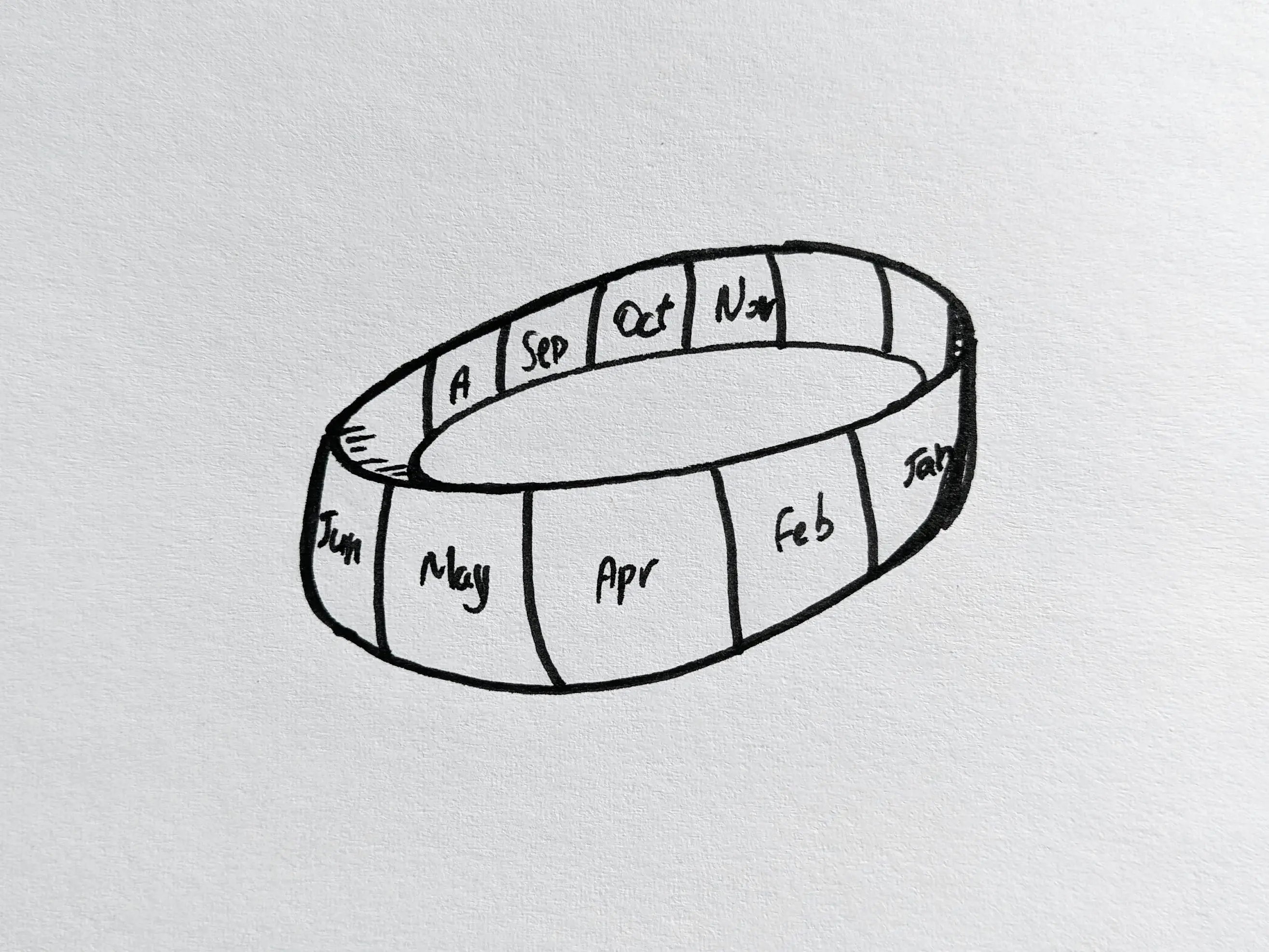 Year as a 3D circular stripe
Year as a 3D circular stripe
Bringing perspective
More doodles about the perspective of the observer, i.e. what the person imagines seeing through their eyes.
Some perspectives are static, some dynamic. Some people see the whole calendar in front of them. There are people who see only part of the calendar, because it is so big. They can even walk around on it, and “turn” their head to look at the other part of the year in a distance.
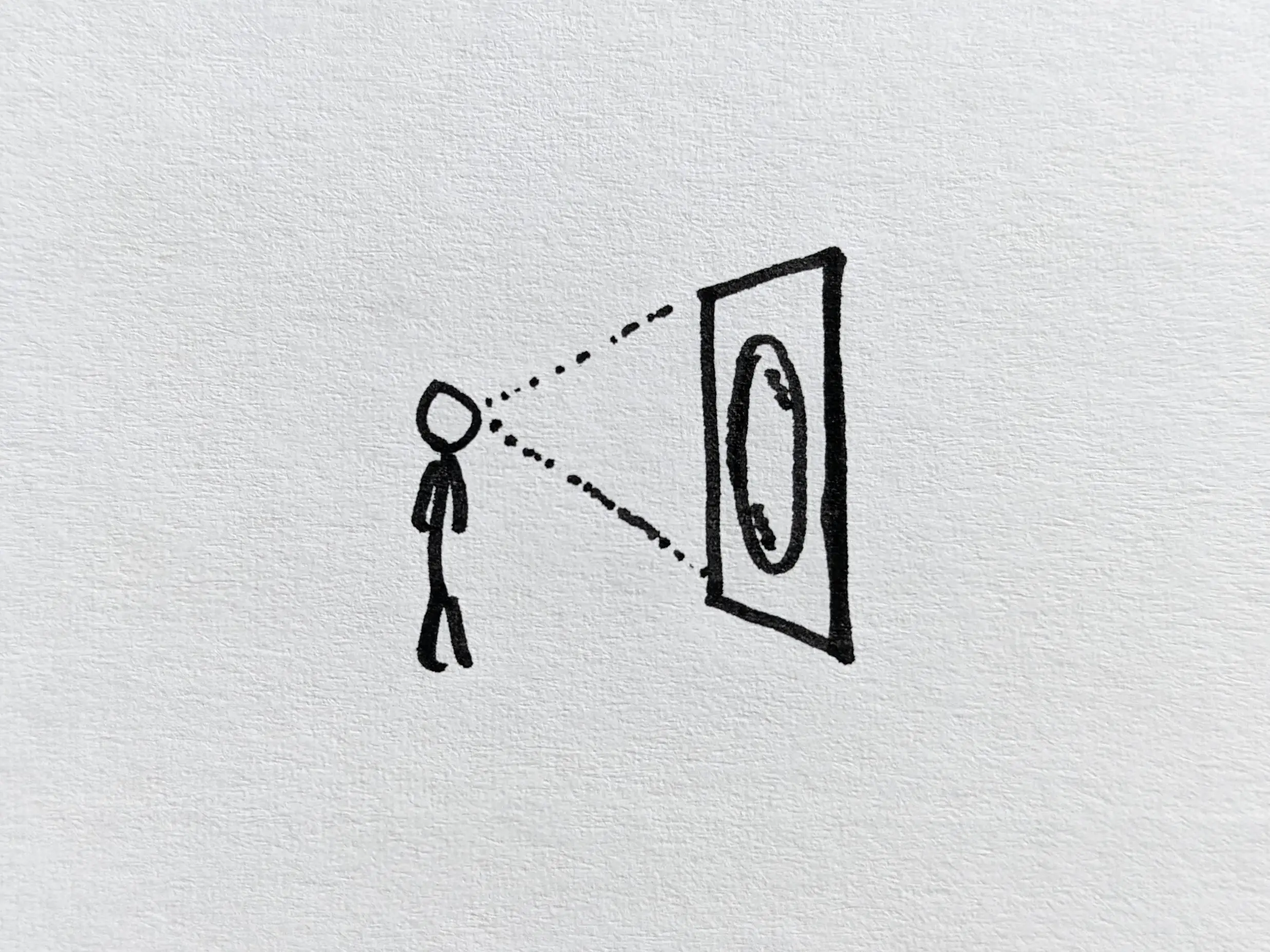 Observing a 2D flat surface
Observing a 2D flat surface
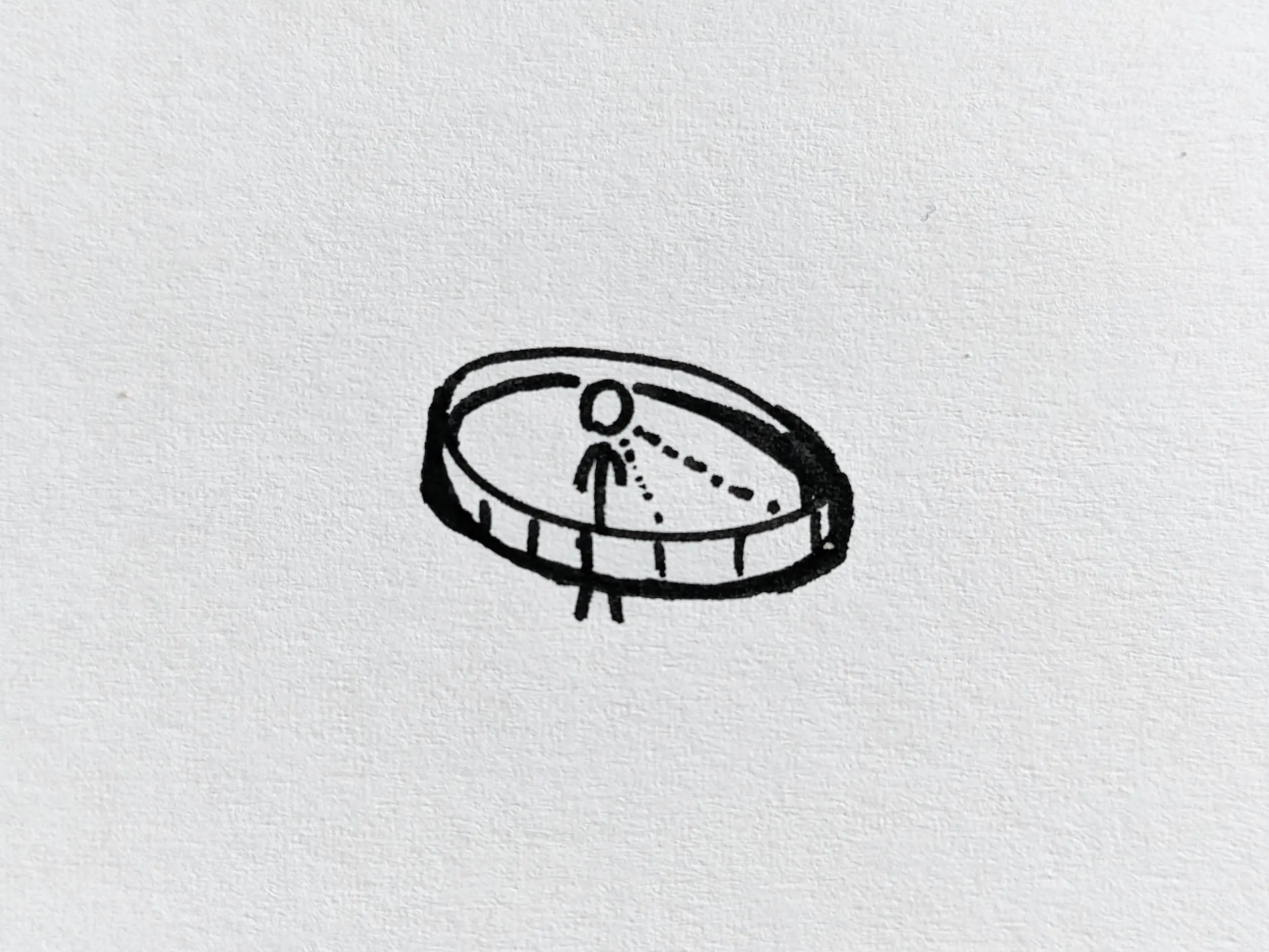 Observing from inside a 3D shape
Observing from inside a 3D shape
 Observing in 3D space and looking around
Observing in 3D space and looking around
Only time will tell
There are so many more facets of this to explore!
- How do we imagine other time scales, like a day?
- What is the distribution of mental shapes among the population?
- At what age does the image usually form, or why does it not form?
- How does it depend on the culture and available technology?
- Can we make unconventional calendar apps that will be a hit?
There are some things we can say we already know:
- December o’clock is 11am (many pictures inside)
- There is some physics to circly calendar shapes
- Time flow direction varies between cultures (video)
But the one thing I know for sure is that talking about time is a timeless topic.
Footnotes
-
“Time is a flat circle” is a quote from True Detective ↩